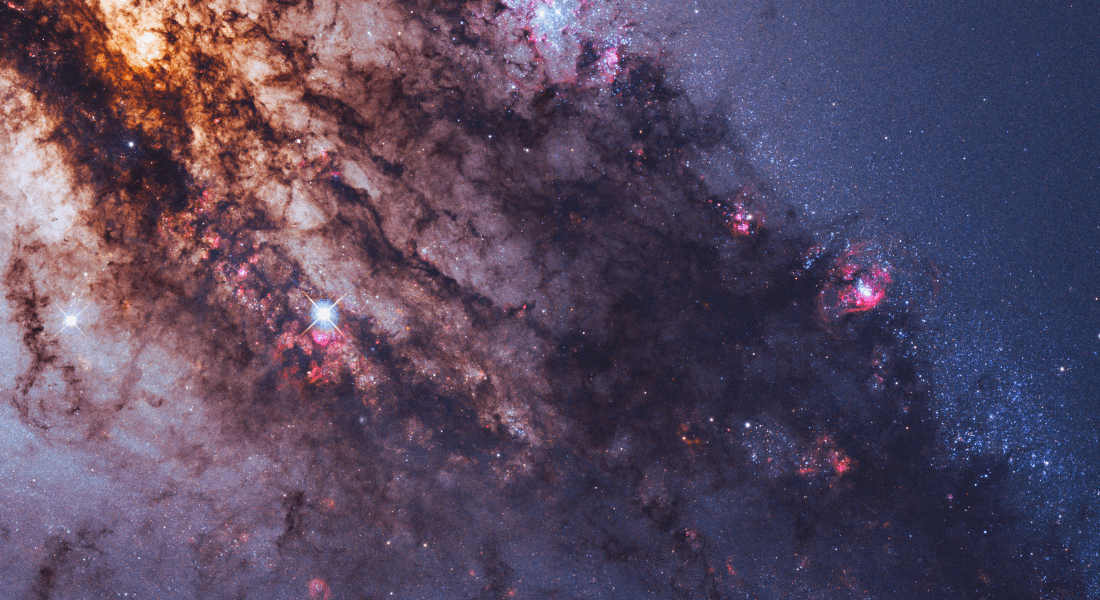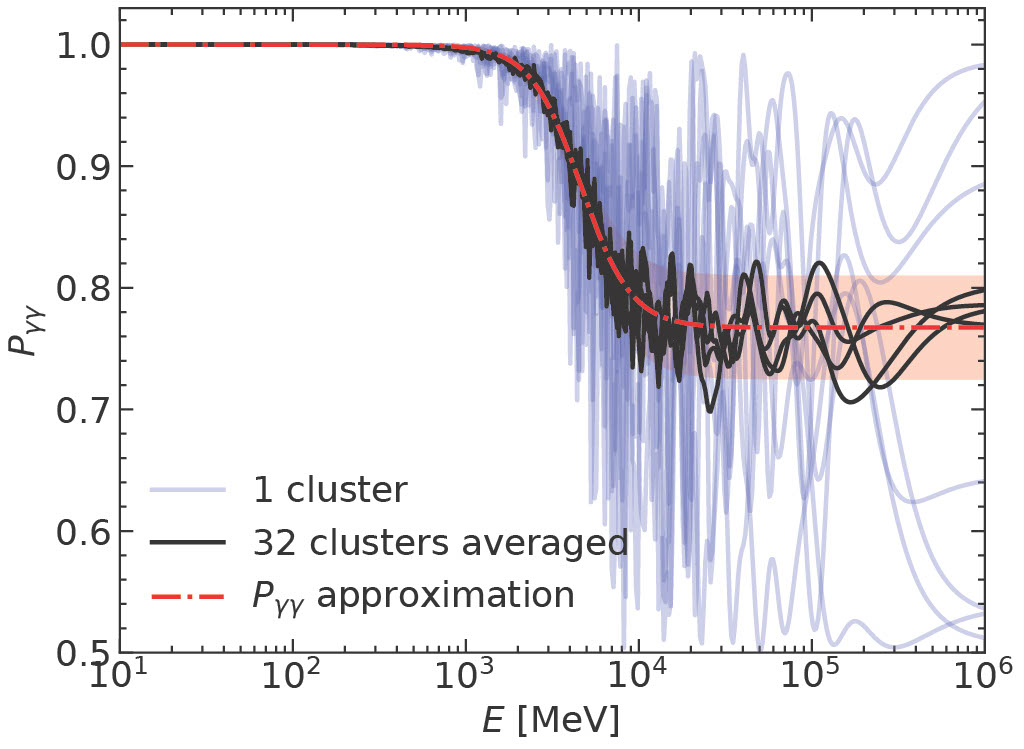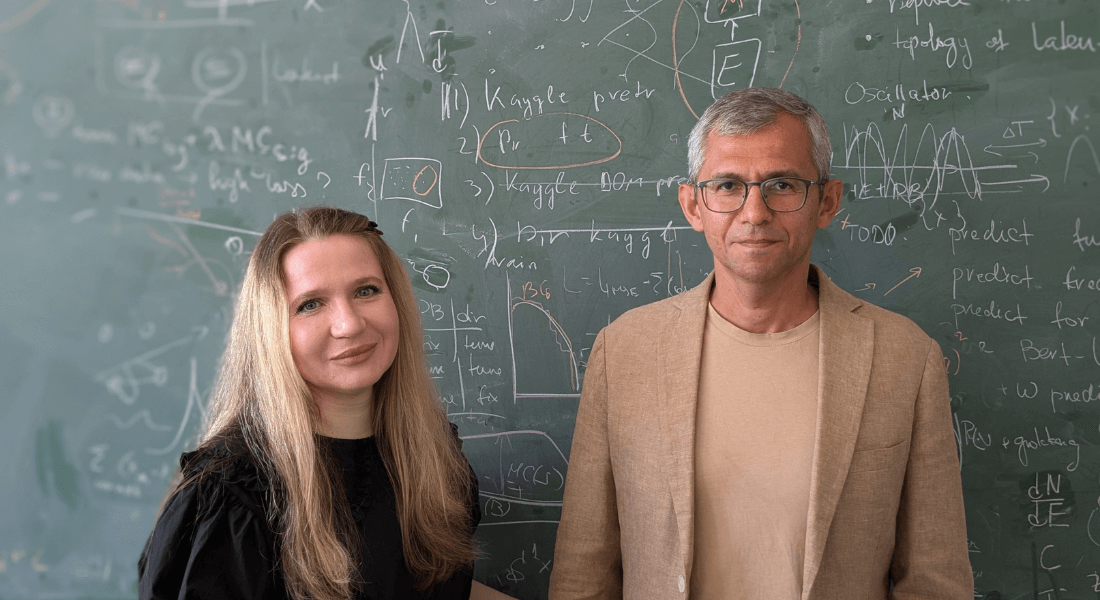Physicists from the University of Copenhagen have begun using the gigantic magnetic fields of galaxy clusters to observe distant black holes in their search for an elusive particle that has stumped scientists for decades.

It is a story of extremes that are hard to fathom.
The heaviest structures in the universe, clusters of galaxies, are a quadrillion times more massive than the Sun. And axions, mysterious theoretical particles, are much, much lighter than even the lightest atom.
About 80 percent of the mass of the cosmos is thought to consist of dark matter. Scientists are not sure what it is, but believe that it could consist of unidentified, theoretical particles such as axions. The axion was originally proposed as a solution to an unexplained problem in the realm of particle physics known as the strong CP problem.
Galaxies are collections of stars, cosmic dust, planets, gas and dark matter often circling a supermassive black hole at the center. Galaxy clusters are groups of hundreds or thousands of galaxies bound together by gravity.
Sources: Nasa, Associate Professor Oleg Ruchayskiy
The axion is a hypothetical elementary particle that could hold the key to understanding dark matter, an unknown material that is believed to take up about 80 percent of the mass in our universe.
No one has yet proven the existence of axions, which has eluded researchers for decades. But with a clever trick involving faraway galaxies, physicists from the University of Copenhagen possibly came closer than ever before.
Instead of using a particle accelerator on Earth, like the one at CERN, the researchers turned to the cosmos and used it as a kind of gigantic particle accelerator. Specifically, they searched for electromagnetic radiation emitting from the cores of distant and very bright galaxies, each with a supermassive black hole at its center.
They then observed this radiation as it passed through the vast magnetic fields found in galaxy clusters, where some of it could hypothetically transform into axions. This transformation would leave behind tiny, random fluctuations in the data. But each signal is so faint that, on its own, it gets lost in the background noise of the universe.
So, the researchers introduced a novel concept. Instead, they observed a total of 32 supermassive black holes positioned behind galaxy clusters and then combined the data from their observations.
When the researchers examined the data, they were surprised to discover a pattern that resembled the signature of the elusive axion particle.
"Normally, the signal from such particles is unpredictable and appears as random noise. But we realized that by combining data from many different sources, we had transformed all that noise into a clear, recognizable pattern," explains Oleg Ruchayskiy, Associate Professor at the Niels Bohr Institute of the University of Copenhagen and senior author of a new paper in Nature Astronomy that tries to study the axion. He adds:

The step-like pattern revealed in the data observed by the researchers, potentially showing the conversion from gamma rays to axions. Illustration from the research paper.
"It shows up like a unique step-like pattern that shows what this conversion could look like. We only see it as a hint of a signal in our data, but it is still very tantalizing and exciting. You could call it a cosmic whisper, now loud enough to hear."
Finding the step-like pattern
Distant galaxies with a supermassive black hole at their center radiate magnitudes of energy and light. These galaxies are also powerful sources of a type of electromagnetic radiation known as gamma rays, which the researchers were interested in.
"We looked at these black holes through clusters of galaxies. Galaxy clusters are among the largest structures in the universe and reservoirs of enormous, widespread magnetic fields. They act as a sort of prism through which some of the gamma rays in theory would turn into axions," explains Associate Professor Oleg Ruchayskiy.
By observing 32 different black holes positioned behind galaxy clusters and averaging the data from their observations, the researchers revealed the step-like signature.

Black hole galaxies emit energy and light, including gamma rays (γ) (left panel). If axions exist, some of the γ-rays would, hypothetically, turn into axions (a) as they travel through the magnetic fields surrounding clusters of galaxies. But since these magnetic fields are very intricate, it is impossible to predict such a conversion to axions in a single observation, resulting in messy data (center panel). But by combining knowledge from many of these galactic pairs, the step-like signature appears (right panel). Illustration: Lidiia Zadorozhna
Closer to discovering dark matter
While the pattern revealed by the scientists is not definite proof of the existence of axions, the research by Oleg Ruchayskiy and colleagues brings us closer to understanding what dark matter is.
"This method has greatly increased what we know about axions. It essentially enabled us to map a large area that we know does not contain the axion, which narrows down the space where it can be found," says Postdoc Lidiia Zadorozhna, a Marie Curie fellow at the Niels Bohr Institute, who is one of the leading authors of the new paper.

Lidiia Zadorozhna and Oleg Ruchayskiy from the Niels Bohr Institute search for the elusive dark matter particle, the axion, by using the universe as a gigantic particle accelerator. Photograph: Inar Timiryasov
While this experiment focused on a specific type of electromagnetic radiation known as gamma rays, the method can also be used on other types of radiation, like X-rays.
"We are so excited, because it is not a one-time advancement. This method allows us to go beyond previous experimental limits and has opened a new path to studying these elusive particles. The technique can be repeated by us, by other groups, across a broad range of masses and energies. That way we can add more pieces to the puzzle of explaining dark matter," says Lidiia Zadorozhna.
Read the study "Constraints on axion-like particles from active galactic nuclei seen through galaxy clusters".






